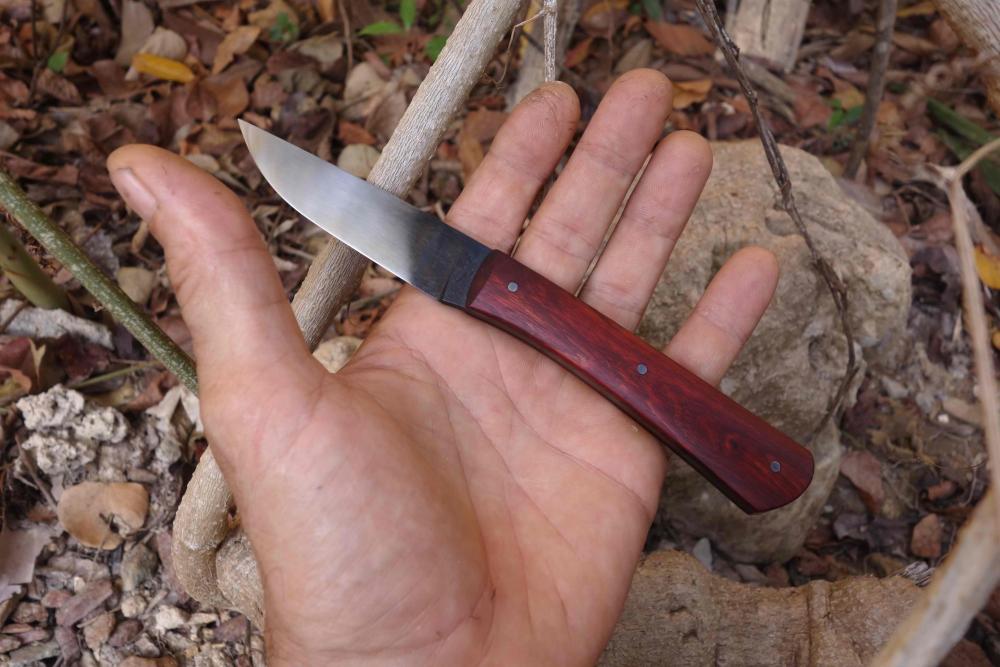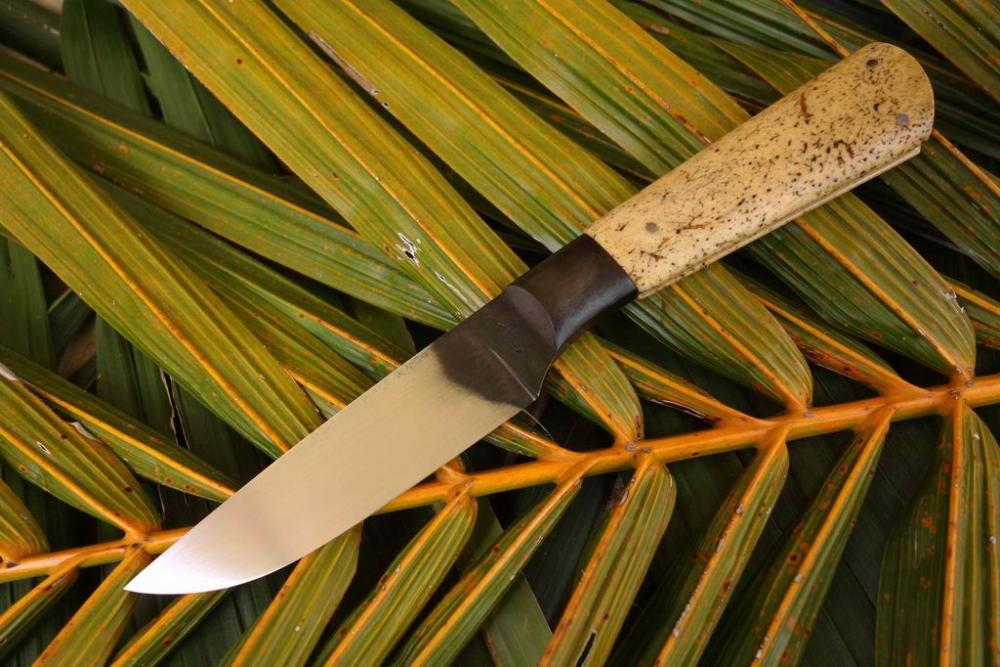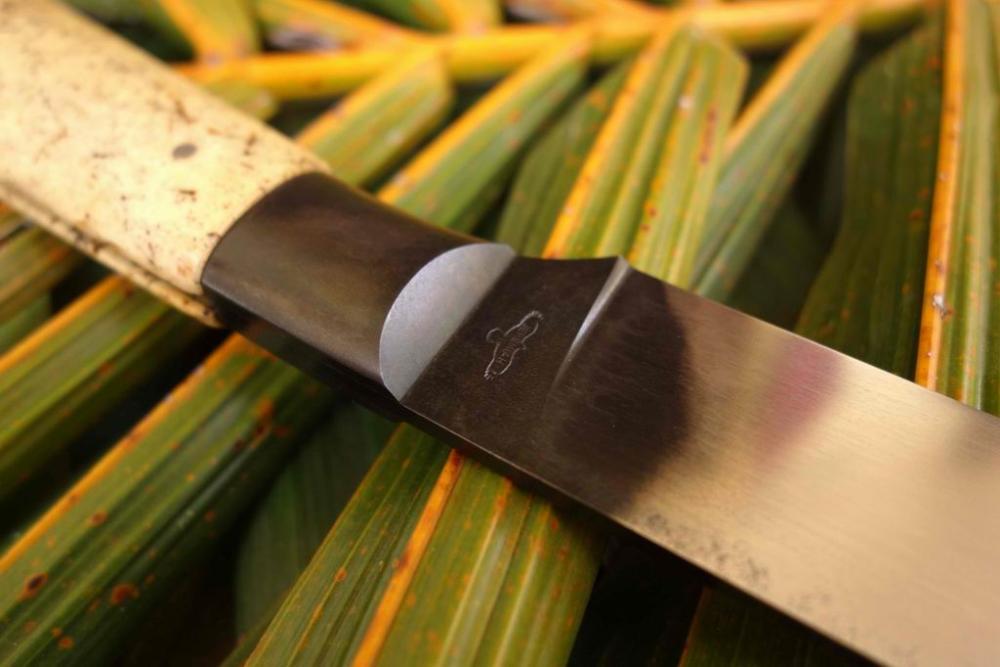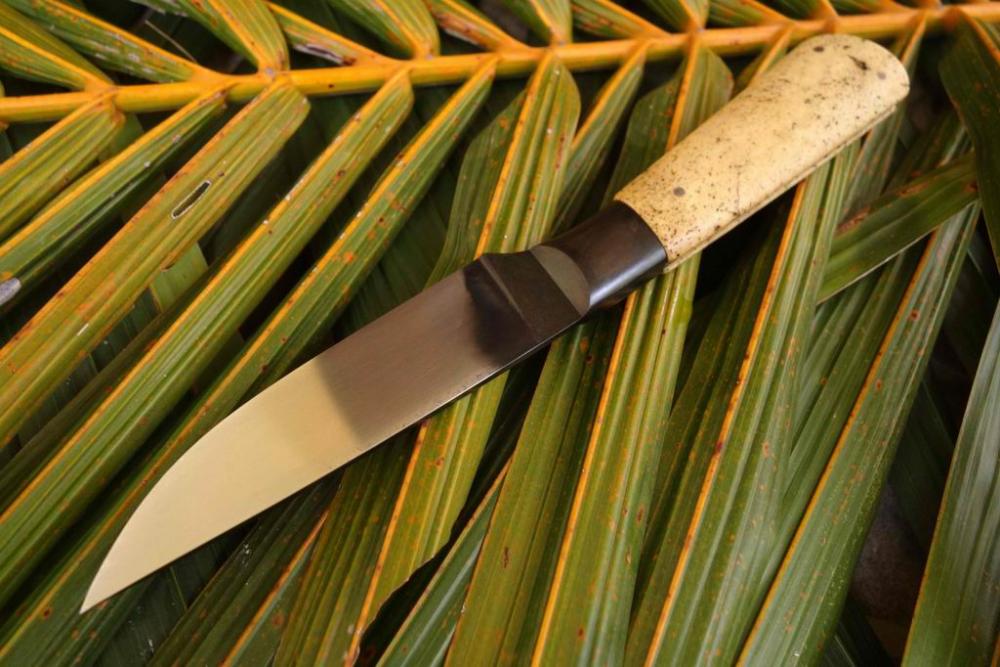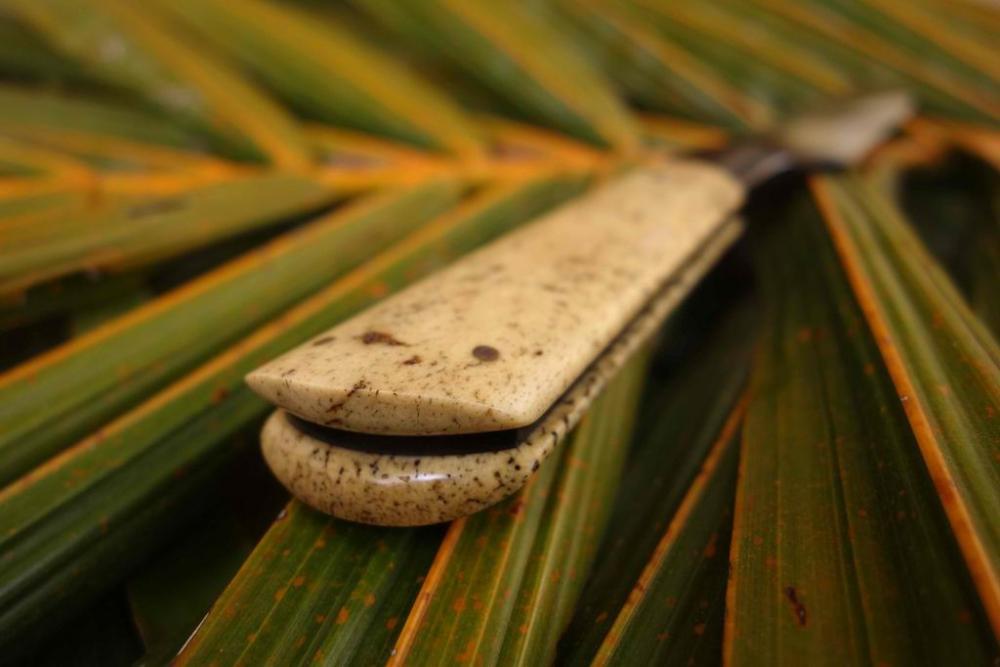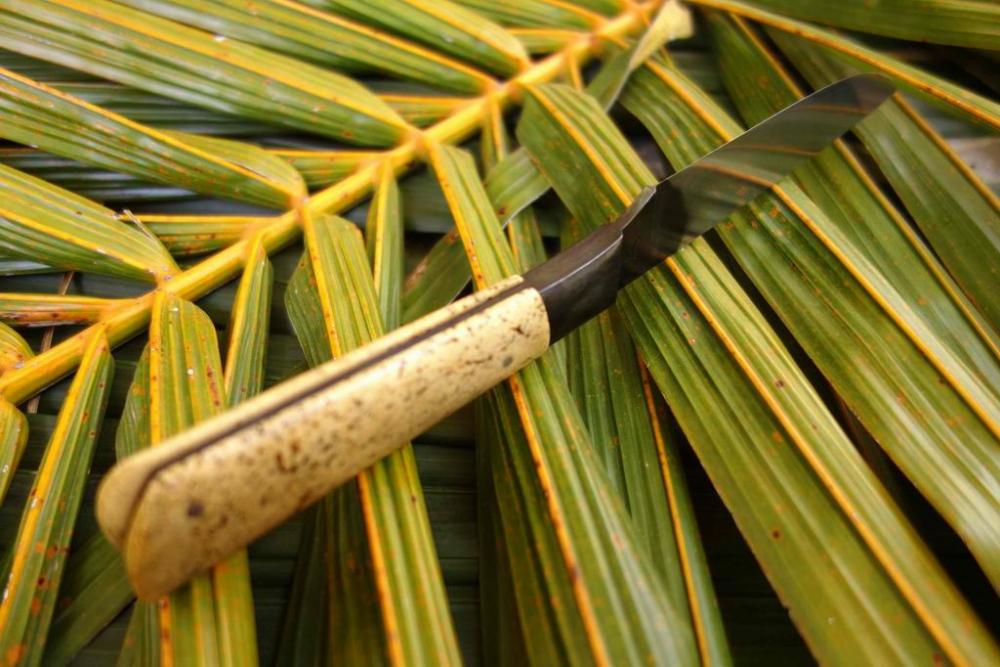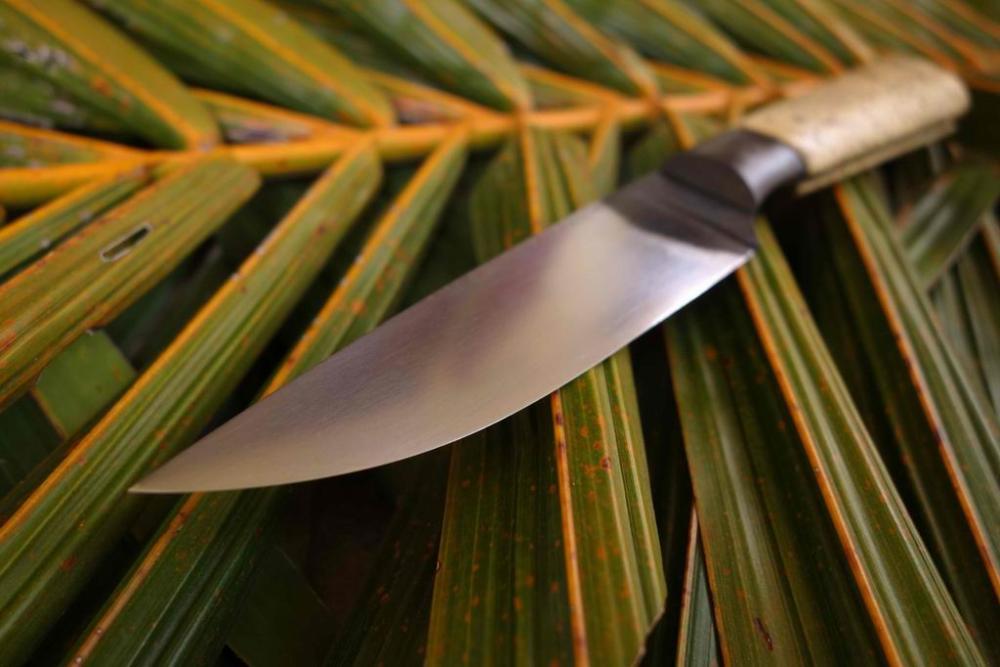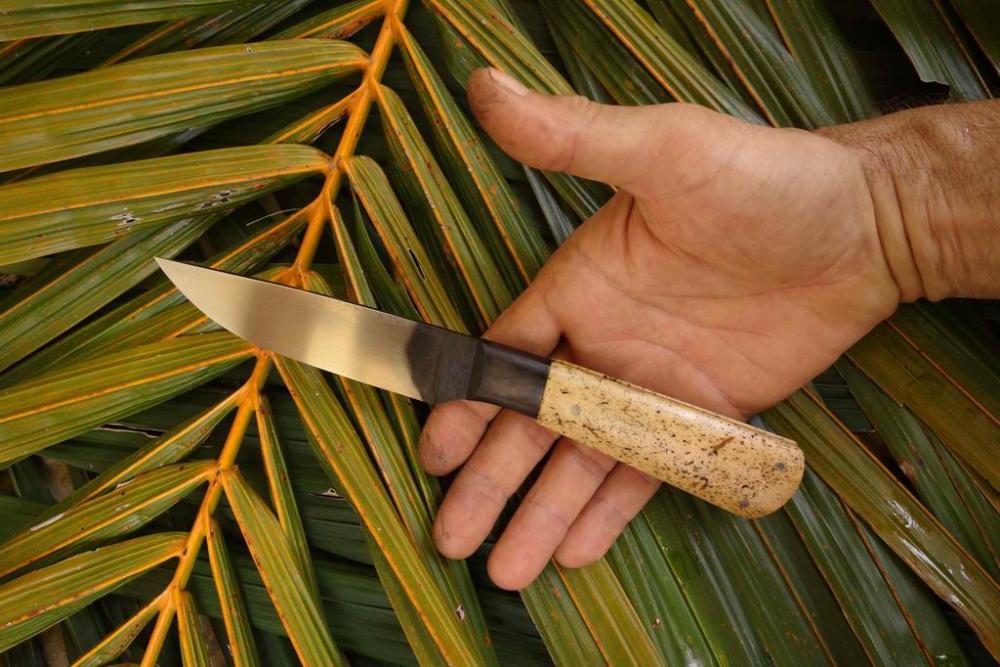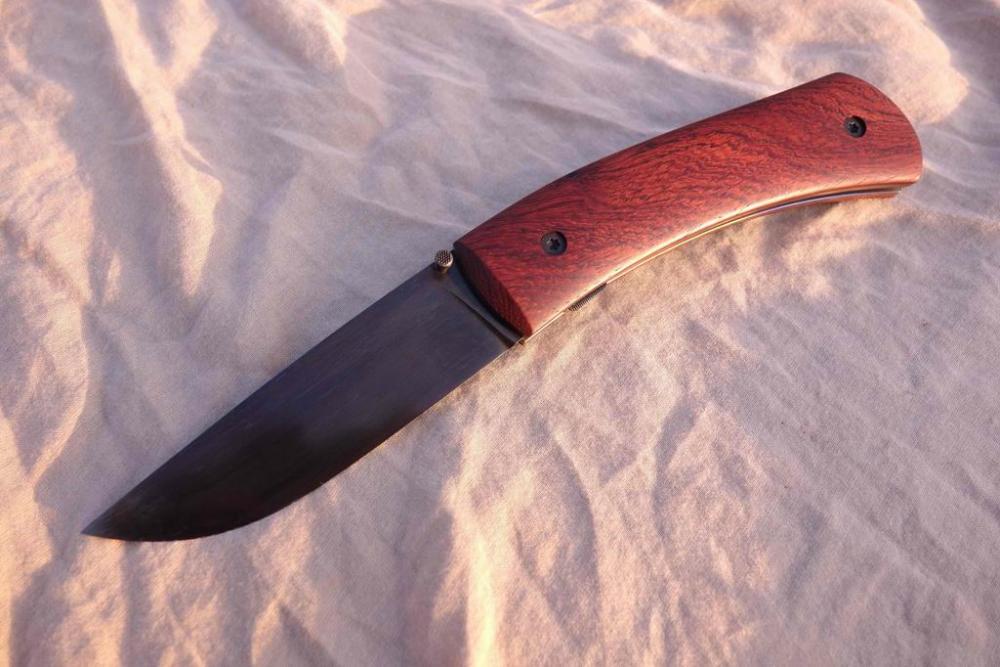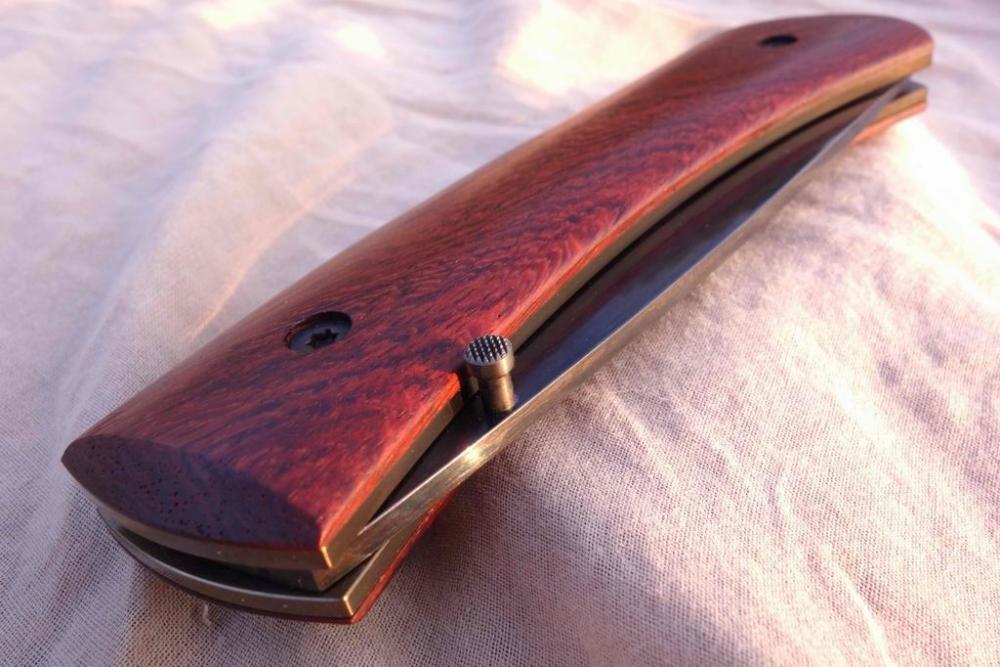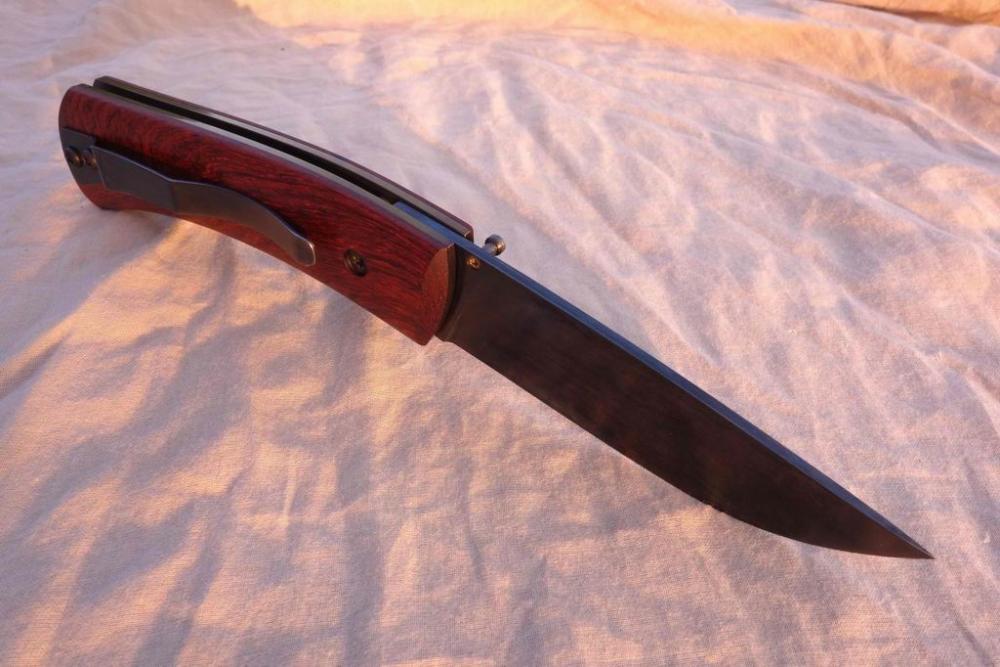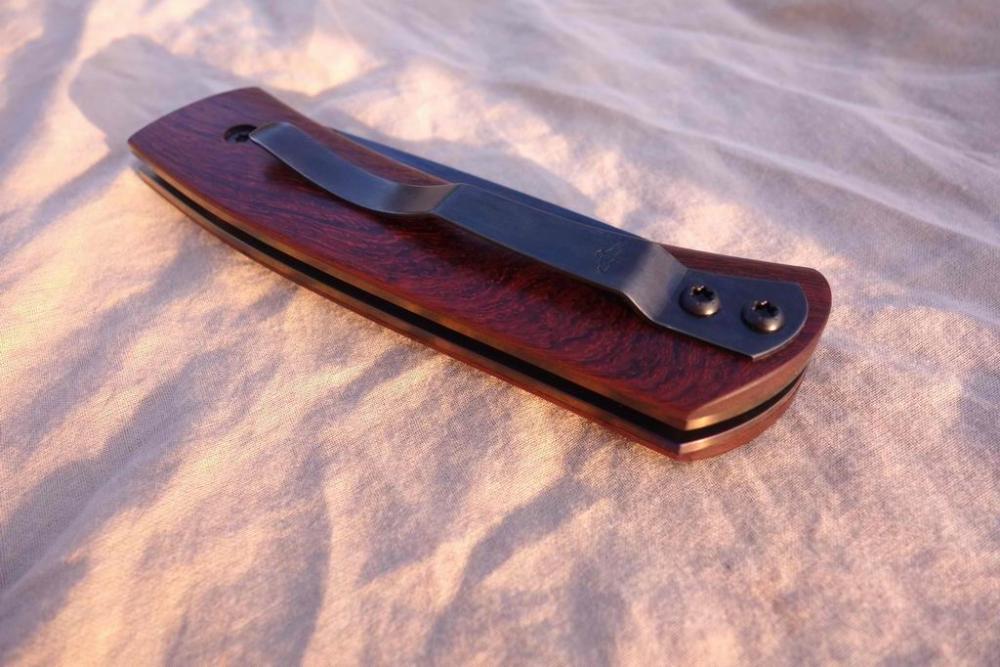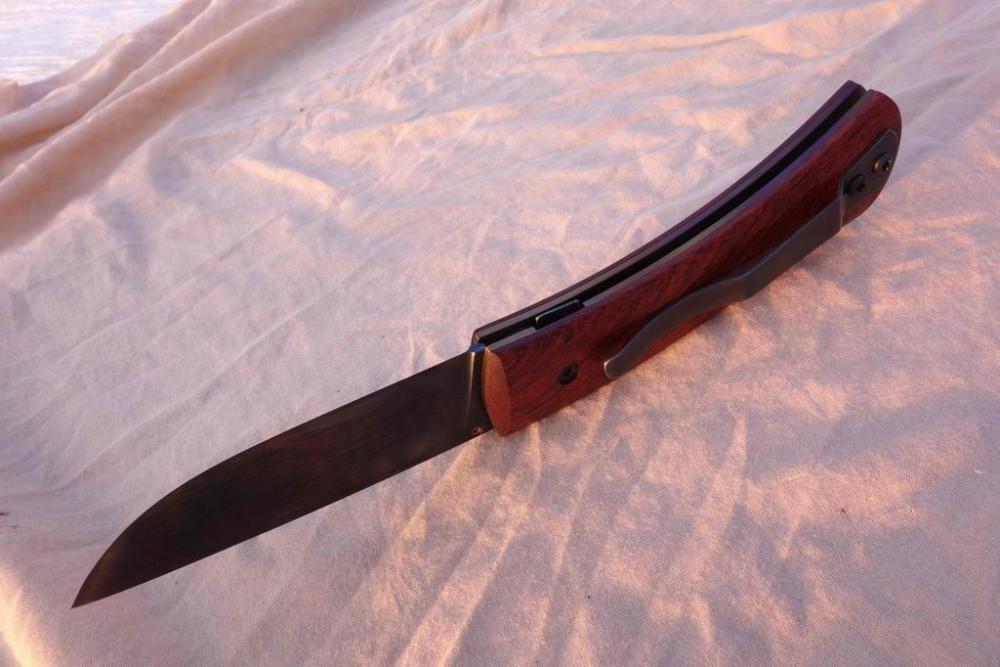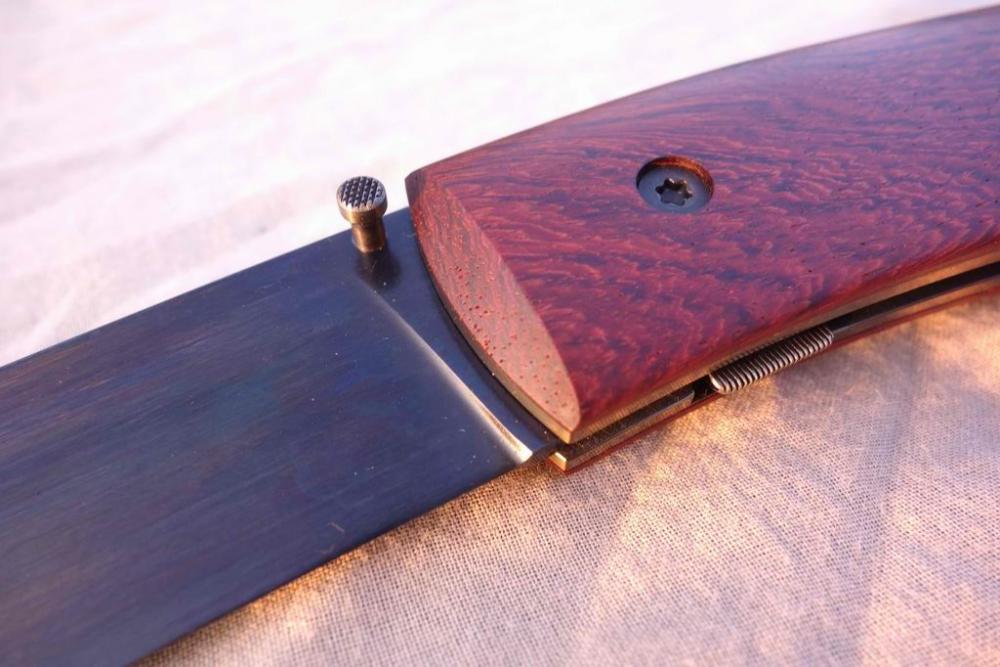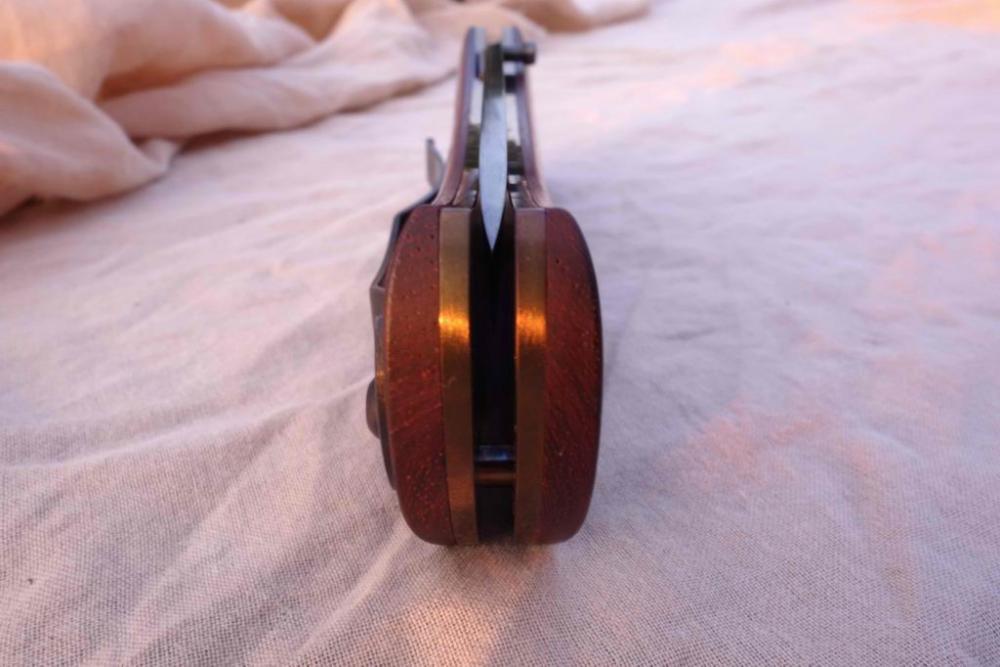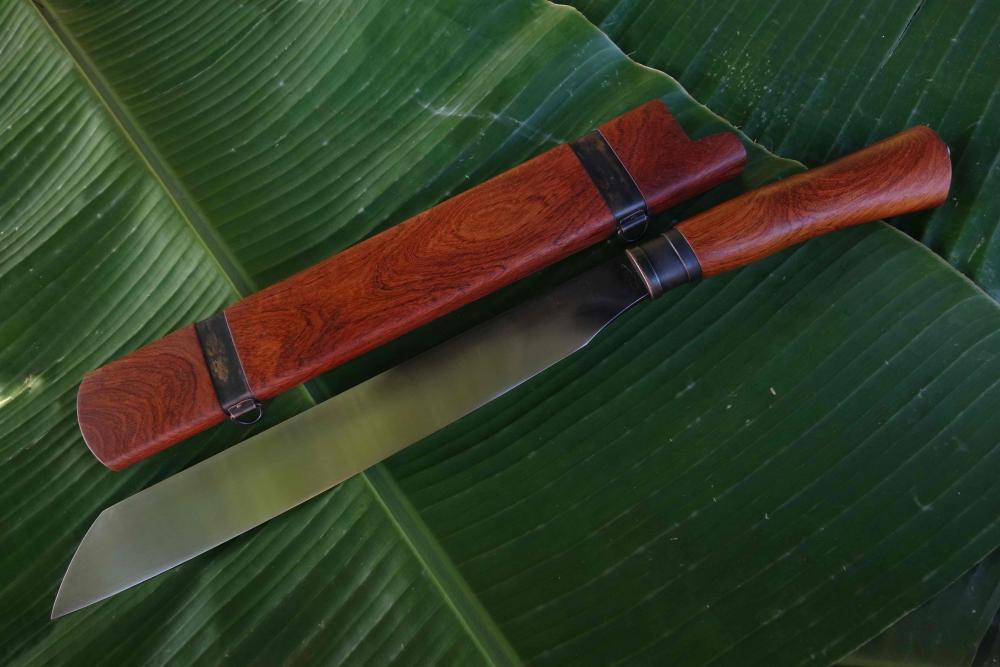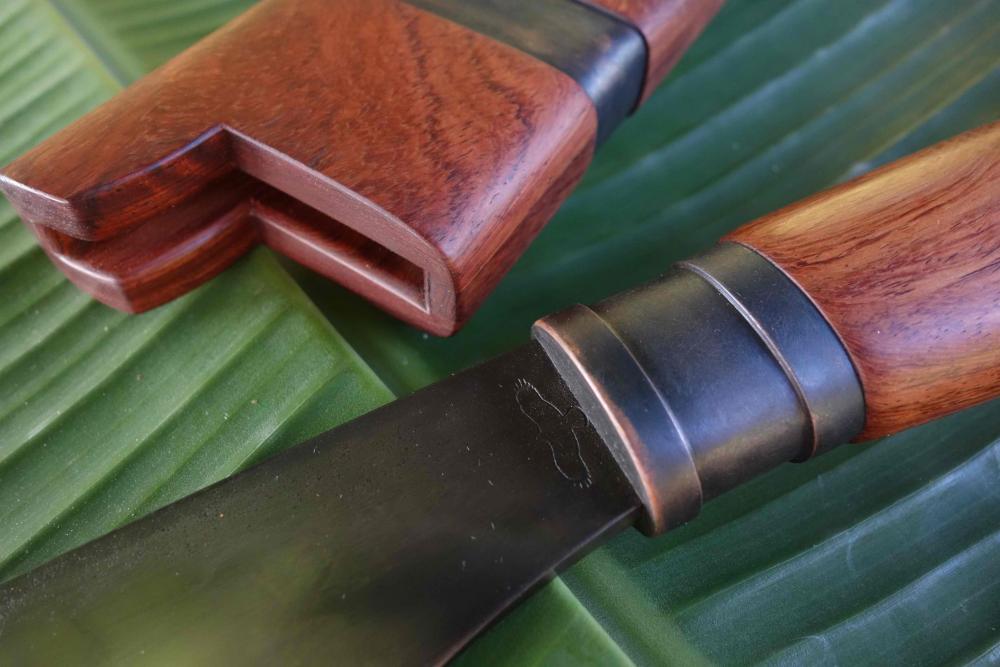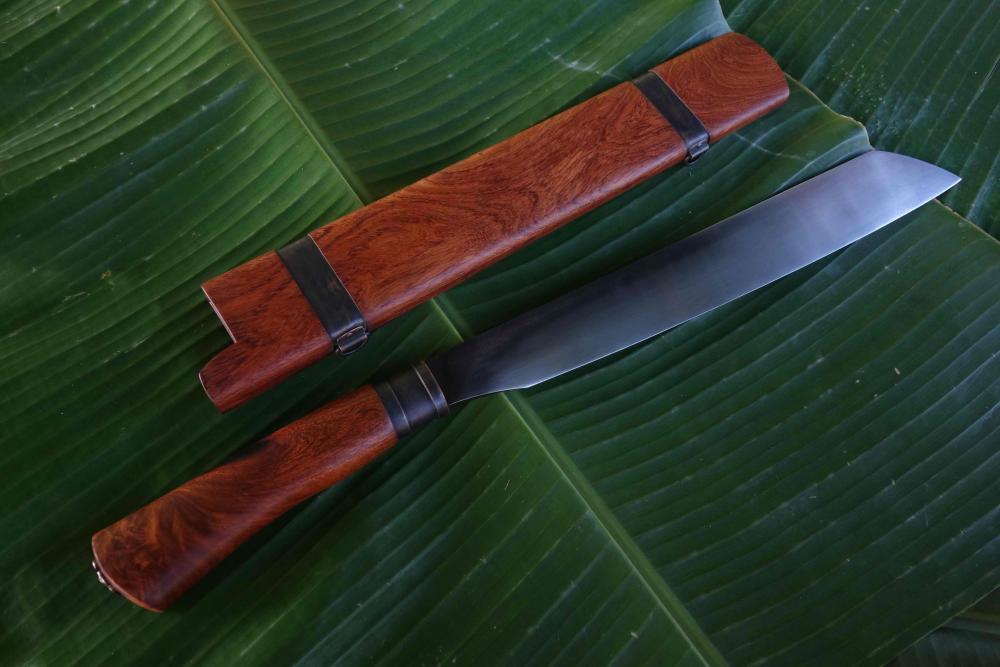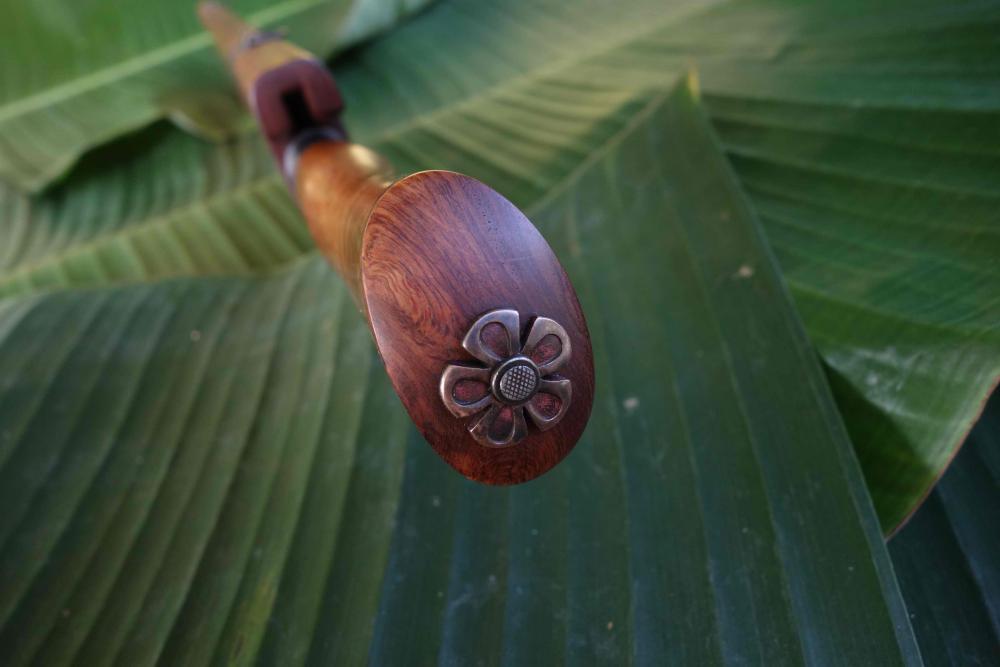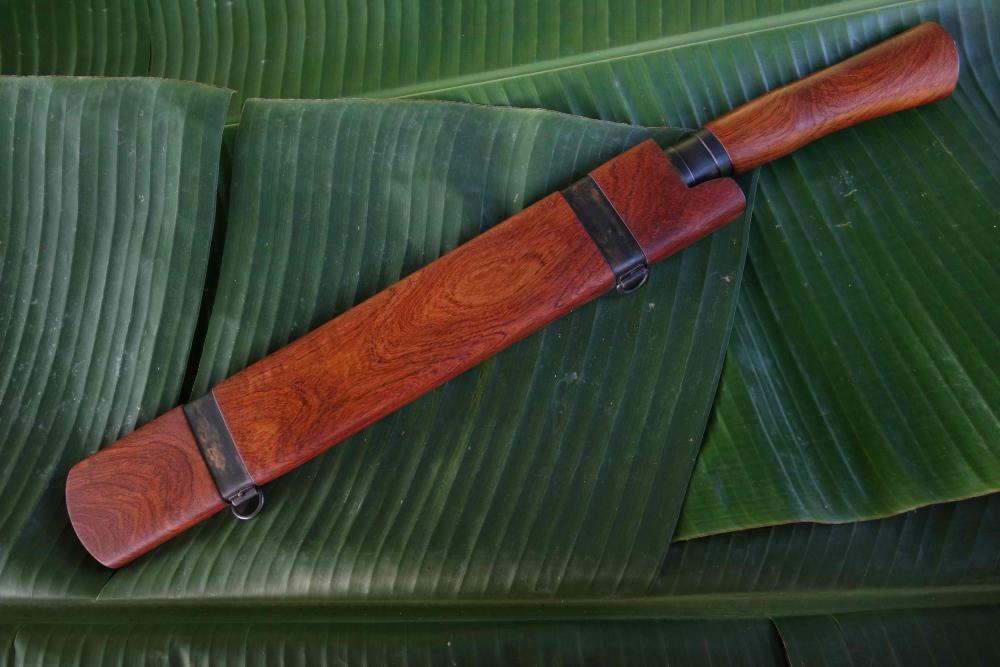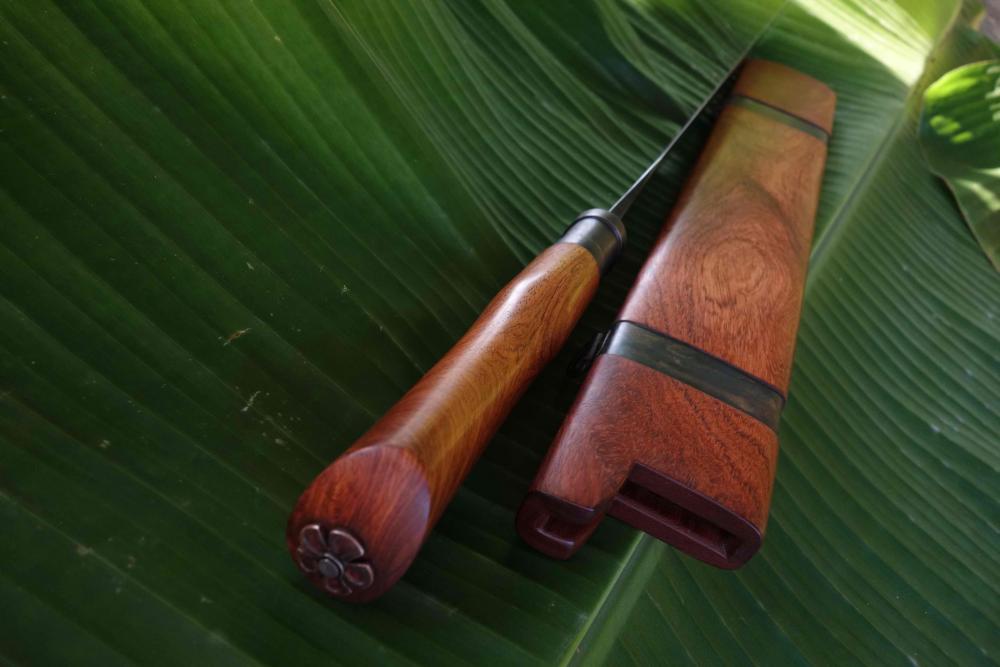-
Posts
448 -
Joined
-
Last visited
Content Type
Profiles
Forums
Articles
Gallery
Downloads
Events
Everything posted by templehound
-
Small folder with forged 1.2513 Boehler TWR, 6Al4V titanium, Ceylon ironwood scales and all mechanical parts from high carbon spring steel. 180 mm overall length.
-
25 years ago I was a beginner and I sold my knives too.....with all the mistakes in it.....I wished I had not done this so fast, but its one of the facts I grew up in this business. What I did good, I relayed the first couple of years on stock removal. that was the advice more experienced knife making fellows recomended to me and I listened to them. Today we have superior steels that cannot get better with forging.( Others need to be forged to get that high performance or even cannot be used for knives without forging), but thats something not recomended for the beginner) 07 ground from flat stock, for example is a steel who has all benefits of a superior forged blade, in my opinion outperforms most of them(but thats a different topic) with forging You open up the gates of steel for everything.... atmosphere, dirt, impurities, affecting grain structure, micro cracks and so on.....every forging process needs an accurate Heat treatment after, and if not, the chance to produce crap is quite high....this is followed by much higher costs to produce your knives, energy, coal, time,tools, space...even recycling a leaf spring is more expensive than buying the steel which is used for leaf springs and stock removal it....You recycle, You never start with the full potential of the alloy...and as a beginner You need longer time, more loss of carbon....(and besides if You have no power hammer You will curse the high Silicium content in leaf springs) but it seems most of the people think about knives always think about forging, but if You want to produce good tools and sell them for fair money good way to stay with stock removal. Accurate forging needs a lot of plus knowledge and skills .that slows down the process on developing the skills to make a good knife without forging...because the goal is to price and sell "knives"....so to speak a tool that is worth it. ...it is a lot more behind than just enjoy the romantic aspects bang happily on hot steel.....(nothing wrong with that, of course) dont get me wrong I love forging too, but it does make a significant difference in making knives with stock removal. most of the time I forge I do enjoy the benefit of free forming, what can be compared with using a file which is another technique of free forming steel....or just doing it because I can stay outside the work shop enjoying the good weather so pricing comes easy when You come to the point of profitability and even fatigue that every professional maker sometimes has to face...if You do honest and good You always will work on Your skills and concentration limit...every blade has to perform the same quality, dosent matter the price of the knife is 300 or 1000 $ I will not dare to say my words are an advice,....they are just my thoughts on this topic, ....I know its a forging forum so please dont tar and feather me... good luck with You
-
Back from the 70's, Boehler 135WCrV4 TWR
templehound replied to templehound's topic in Folding Knives
Thanks rhitee93!...I do not have assembly pics of the posted knife, but of another which makes no difference because the mechanic and its parts are the same. here is a link to a small German forum where I post on occasions.... folders are an open fine mechanic and they must be maintained to keep their performance. a lot of customers are afraid to disassemble it, so I posted the process to encourage them doing it. it shows most of its interior. If You have any questions about it feel free to ask. Thanks a lot, TwistedCustoms!- 6 replies
-
- liner lock
- padouk
-
(and 1 more)
Tagged with:
-
Thanks for those fine comments, Gentlemen!
-
My pleasure, Thanks! Thanks, boisdarc!
-
.....The blade is forged from 135WCrv4 (1.2513) handle slabs are sterling pinned from Ceylon iron wood (Mesua Ferrea). the sheath is water buffalo leather with a high carbon spring steel clip.
-
Well, I think Your knives should be standard-equipped in the army......and I like the constant choice of 80CrV2 too... Great stout tool.
-
Thanks a lot for the nice comments, Gentlemen! Thats right I forgot to specify the handle slabs which are jaw bone from Steller sea cow. Cheers
-
....is often said by Thais when they explain something to Western people. Just a point of view turns western understood non-sense in eastern profound sense....like this ancient knife pattern that appears always the same shape but in different execution. Steel is 115W8(1.2442), also the bolsters, bone and silver pins, blade length measures 120 mm and overall length is 250 mm.
-
Daswulf, You are welcome, Thanks again! Thank You Jonah!
-
Back from the 70's, Boehler 135WCrV4 TWR
templehound replied to templehound's topic in Folding Knives
Charlotte and Sweany, Thanks a lot, Guys!- 6 replies
-
- liner lock
- padouk
-
(and 1 more)
Tagged with:
-
This locking liner has a forged blade made of 1.2513, some steel rarity, that is not produced since the mid 70's.It was used to produce the ignition wheels of lighters, to mention one of its purposes. This could make it appropriate showing up in a forging forum. so we have 1.2513 for the blade with 93 mm in length, 6Al4V titanium for the liners, spring, clip and other mechanical parts are all made from high carbon spring steel and the handle slabs are made from Padouk root( Pterocarpus Macrocarpus). Overall length measures 210 mm.
- 6 replies
-
- liner lock
- padouk
-
(and 1 more)
Tagged with:
-
Sometimes it is a bit difficult translating something like "Bocksblech" into English,especially when it is something like Black Forest South German hill billy stuff ...but let me try..... Bock = He-Goat, Buck, ...in this case : Capricorn (english) = Steinbock (german)...so it translates directly : stone buck, stone goat....( it leads to the scales made out of capricorn horn (engl) or Steinbockhorn (german) buck or goat, I choosed goat because it sounds more rugged..(to me as a German) Blech = sheet, thin piece of metal, iron, steel,( metal plate, tin, brass)....so the thin piece of metal(Blech) is the blade..... so we take the "Bock"-scales and the "Blech"-sheet put them together and we have the "Bocksblech" not forgetting an additional "s" for correct German spelling. Hope that helps to understand the term. Perhaps someday templehound will add a location to his profile
-
Thanks a lot for the nice comments, Gentlemen!
-
That makes a lot of sense because it is an exact description of the kind of finish I want to have on my knives.
-
Whatever that might mean.... Cold gun blue of any brand works well. Thomas, with respect to the tempering of the blade (cold work tungsteen tool steel, max.temper at 230 degrees)I would not recommend blued hot, which, as far as I know starts at 300 Degrees. ...a bit sinister for church, isn't it?
-
...could be translated as "Goat's sheet". It has a blade made from 1.2442 (115W8) that is 86 mm long, 2 mm in width and overall length measures 200 mm. Handle slabs are Capricorn horn pinned with sterling.
-
Jspool and Klorinth, Thank You, Guys!
- 13 replies
-
- indian padouk
- narra wood
-
(and 2 more)
Tagged with:
-
Thank You very much Gentlemen! I appreciate it very much!
- 13 replies
-
- indian padouk
- narra wood
-
(and 2 more)
Tagged with:
-
JHCC I agree with You, it is a very nice wood to work with, like You said not too soft not too hard.That fact makes it one of the most durable natural materials .On folders with those thin scales, padouk dont shrink, warp, or crack.This makes it a material with more endurance than Giraffe bone. With the color I have different experiences with Padouk.Some darken after, some darken a bit and some pieces do not.I guess it has much to do with the individual tree/piece of wood. the Indian Padouk (Pterocarpus Indicus) seems to darken more than the Burma Padouk (Pterocarpus Macrocarpus)from which I have some personal knives in use, that are not darken at all.But they are all from the same hughe root chunk. I finish it to grit 800 and then treat the wood with a very light touch of oil.If use too much, the oil will remain as blue-greyish ugly spots in the pores of the wood. Most of the wood treatments making it darker already It is like so often, the more You know the more questions You have
- 13 replies
-
- indian padouk
- narra wood
-
(and 2 more)
Tagged with:
-
I use Potassium Sulfide.If You polish the copper surface it will rub off to fast. Give it a 240 grit scratch finish like jewelers use to do then the patina remains better.
- 13 replies
-
- indian padouk
- narra wood
-
(and 2 more)
Tagged with:
-
The blade of this light parang, I forged from leaf spring of a bicycle-riksha. Handle and sheath are made from the same chunk of Indian Padouk (narra wood) and the fittings are made from copper. Center of the flower is the peened over tang. Blade measures 310mm and overall 460mm
- 13 replies
-
- indian padouk
- narra wood
-
(and 2 more)
Tagged with:
-
It is brought to an 600 grit finish, sisal polished lenghtwise and cold gun blued....no specific brand, I take what makes dirty and dark. Thanks.
-
Jspool, Worshipdrummer and Otto, Thank You very much Gentlemen!

